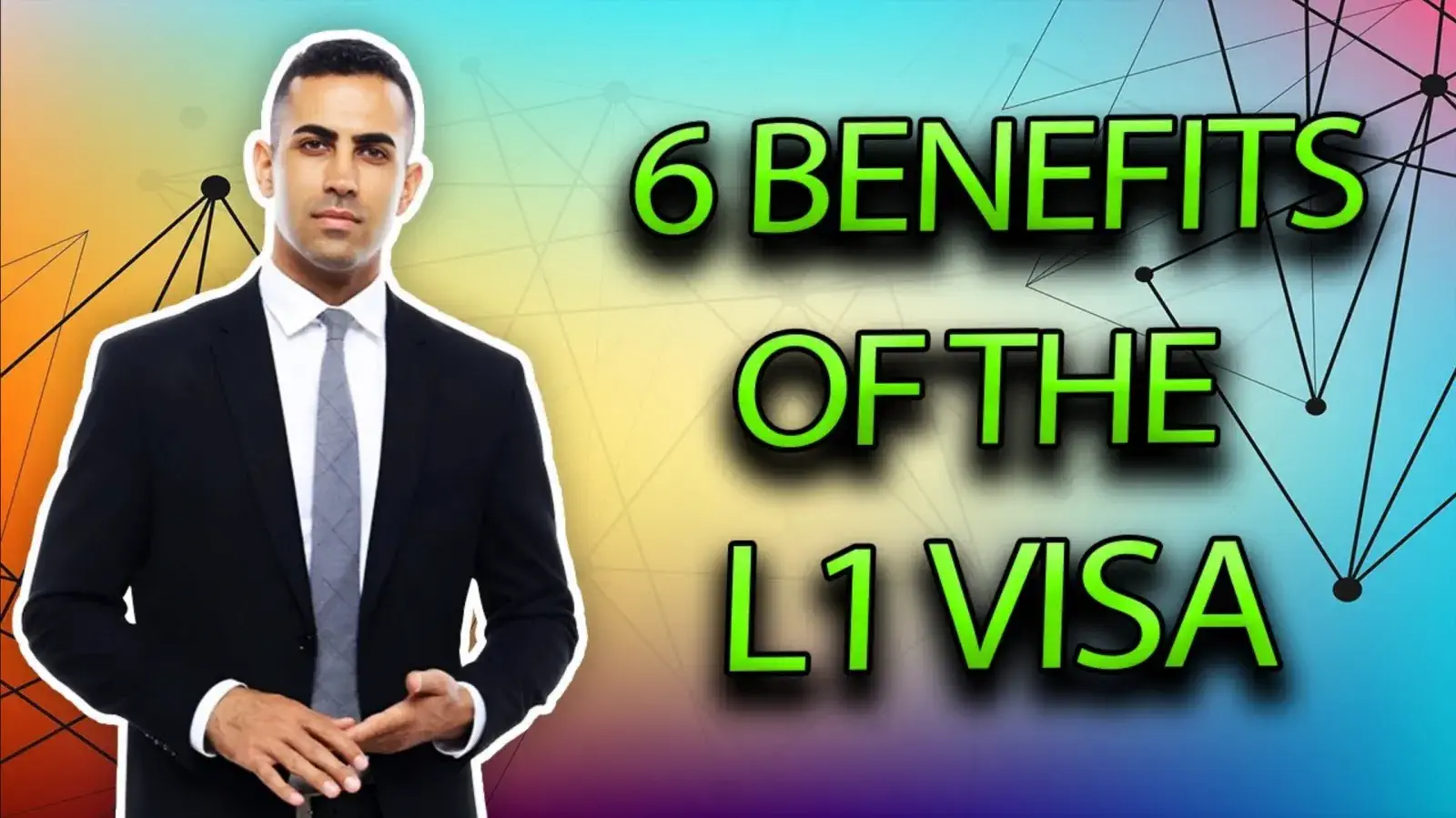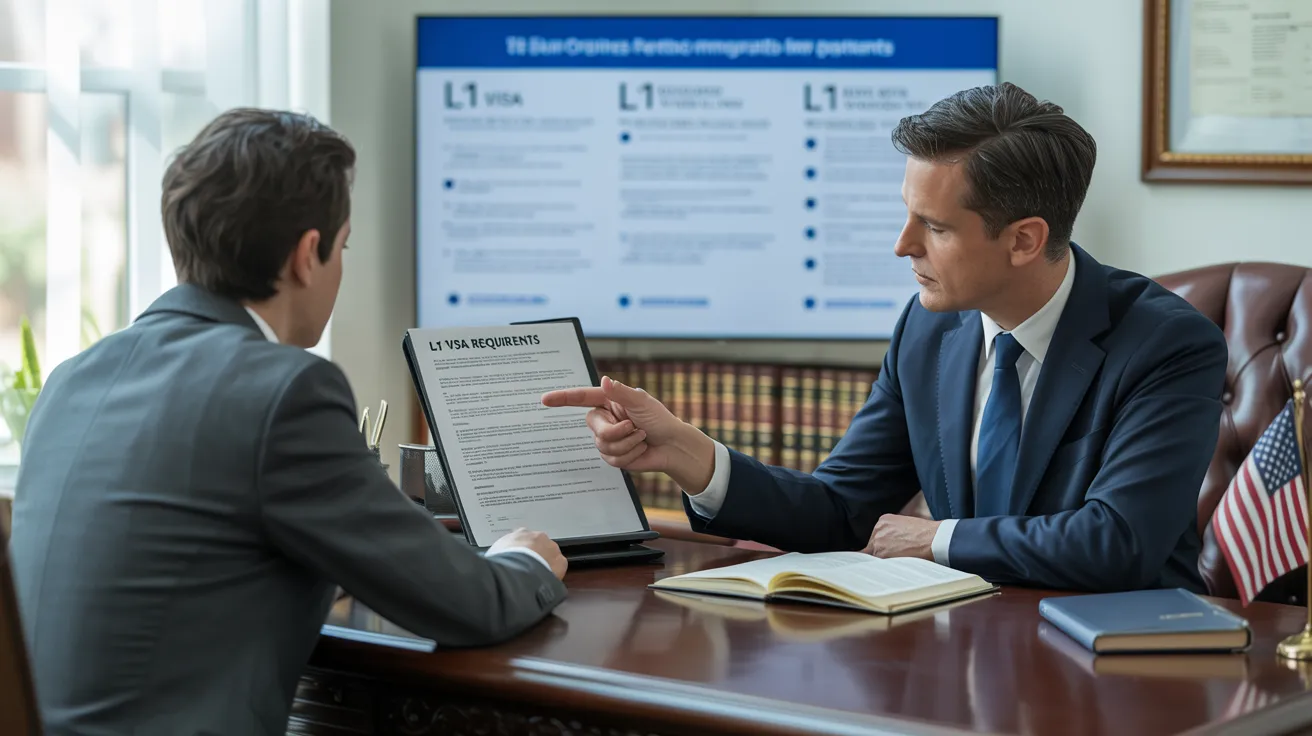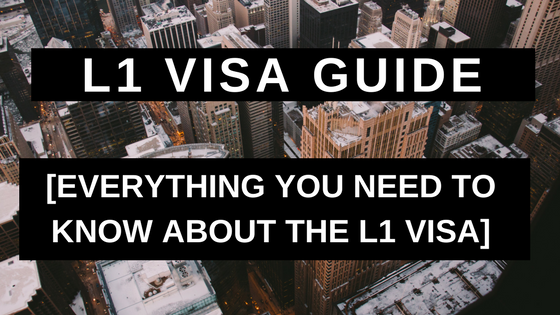Opening Opportunities: A Comprehensive Overview to the L1 Visa Process
The L1 visa process provides an essential path for multinational firms seeking to move key workers across boundaries. Understanding the nuances of eligibility requirements, the distinctions between L-1A and L-1B visas, and the ins and outs of the application process can greatly affect a candidate's success. Nonetheless, maneuvering this complicated landscape is not without its obstacles, and mindful interest to documentation and employer sponsorship is vital. As we discover the vital elements of this procedure, the approaches for overcoming potential barriers will certainly become apparent, disclosing how notified prep work can open up a world of chances.
Recognizing the L1 Visa
Recognizing the L1 visa requires identifying its significance as a vital tool for international business looking for to move knowledgeable employees between international workplaces. This non-immigrant visa group assists in the movement of execs, supervisors, and specialized expertise workers to the United States, consequently enabling organizations to preserve operational continuity and harness global ability effectively. The L1 visa is split into 2 main classifications: L-1A for managers and execs, and L-1B for employees possessing specialized knowledge.The L1 visa serves a crucial role in enhancing a business's one-upmanship in the international marketplace - L1 Visa Requirements. By enabling firms to relocate their key personnel, businesses can guarantee that vital projects are handled by qualified people who are already knowledgeable about the company's society and operational procedures. This inner transfer system not just fosters knowledge sharing yet also promotes technology and cooperation throughout borders.Moreover, the L1 visa is usually favored for its relatively simple application process compared to various other visa categories, as it enables twin intent, allowing owners to pursue irreversible residency while on a short-term copyright. This function makes the L1 visa especially appealing for both employers and staff members, as it streamlines the pathway for experienced experts to establish long-lasting residency in the United States
Qualification Criteria
Eligibility for the L1 visa depends upon a number of crucial criteria that ensure both the staff member and the employer fulfill certain qualifications. This non-immigrant visa is designed for international firms to transfer workers from consular services to united state counterparts.Firstly, the company needs to be a certifying company, that includes a parent business, branch, associate, or subsidiary of a united state company. The business must have been doing service for at the very least one year both in the U.S. and abroad. This assures that the firm has sufficient functional security and a genuine presence.Secondly, the worker has to hold a supervisory, executive, or specialized expertise setting. For L1A visas, the applicant has to show supervisory or executive credentials, while L1B visas concentrate on specialized knowledge pertaining to the organization's items, services, or procedures. Additionally, the staff member should have benefited the foreign entity for at the very least one continuous year within the last three years before their application.Lastly, the staff member's function in the united state need to straighten with their previous placement, guaranteeing that their abilities and competence are leveraged for the company's advantage.
Sorts Of L1 Visas
The L1 visa group makes up two key types designed to facilitate the transfer of workers within multinational business: the L1A visa for managers and execs, and the L1B visa for staff members with specialized expertise. Each type serves distinct objectives and has details qualification criteria.The L1A visa is customized for individuals who hold supervisory or executive settings within a business. This visa makes it possible for high-level employees to transfer to an U.S. branch, subsidiary, or affiliate of the very same organization. Candidates for the L1A visa must demonstrate that they have actually been employed in a supervisory or executive ability for a minimum of one continuous year within the past 3 years prior to their application. Additionally, this visa supplies a longer duration of stay, originally granted for 3 years, with the possibility of expansions for as much as seven years.In comparison, the L1B visa is intended for specialists with specialized knowledge related to the company's products, solutions, or processes. To qualify, candidates have to verify that their competence is vital to the organization and that they have functioned for at the very least one continual year within the last 3 years in a role that needed this specialized knowledge. The L1B visa is at first given for three years, with expansions readily available for as much as five years.Both visa types are essential for firms seeking to improve their global procedures by leveraging competent employees, consequently advertising technology and effectiveness within the united state market.
Application Process
Steering through the L1 copyright procedure entails numerous essential actions that have to be carefully followed to guarantee an effective end result. The process begins with the united state company, who have to initially develop eligibility by demonstrating a certifying relationship with the foreign entity and validating that the worker meets the specific needs for the L1 visa classification being sought.Once eligibility is validated, the company initiates the procedure by filing Type I-129, the Request for a Nonimmigrant Employee, with the U.S. Citizenship and Migration Services (USCIS) This kind must be accompanied by a detailed description of the work responsibilities to be performed, the business framework of both the U.S. and international entities, and the staff member's certifications. It's important to validate that all information is precise and complete, as noninclusions or inaccuracies can lead to hold-ups or denials.Upon authorization of the I-129 request, the following action entails the employee obtaining the L1 visa at an U.S. consular office or consulate in their home nation. This stage needs the completion of Kind DS-160, the Online Nonimmigrant copyright, and setting up a meeting. During the meeting, the applicant has to present proof sustaining their credentials and the employer's petition.After the visa is approved, the staff member can get in the United States to function in the designated function. Generally, careful prep work and adherence per step of the application procedure are vital for an effective L1 visa end result.
Called for Paperwork

Necessary Types Required
Navigating the L1 Visa process requires cautious attention to the vital kinds and paperwork necessary for an effective application. The key type required is the Form I-129, Application for a Nonimmigrant Worker, which should be completed and sent by the U.S. company. This type outlines the details of the work deal and the credentials of the worker seeking the L1 Visa.Alongside Kind I-129, the applicant will certainly need to full Kind I-539 if accompanying relative are additionally requesting visas. Furthermore, the employer must provide evidence of the qualifying relationship between the united state entity and the international entity, usually demanding the submission of business records such as short articles of incorporation or monetary statements.Moreover, it is essential to include the L Category Supplement to Kind I-129, which specifies the kind of L Visa being asked for-- either L-1A for managers and executives or L-1B for employees with specialized expertise. Candidates need to guarantee that all types are signed and dated appropriately, as incomplete submissions can lead to hold-ups or denials. Appropriately putting together these vital forms lays the structure for a smoother L1 copyright process.

Supporting Evidence Demands
Supporting documentation is vital for a successful L1 copyright, as it validates the cases made in the request. Applicants must give a variety of papers to show qualification for the visa, which is classified into 2 primary types: proof of the certifying connection between the united state and foreign entities and evidence of the candidate's qualifications.To establish the partnership, applicants should send paperwork such as corporate business charts, financial statements, and evidence of possession. These documents confirm that the foreign business has a qualifying partnership with the united state company, whether as a moms and dad business, subsidiary, branch, or affiliate.For the candidate's credentials, necessary files consist of a comprehensive work letter from the foreign company, detailing the candidate's task title, responsibilities, and period of employment. Additionally, academic credentials, such as degrees and diplomas, must be offered to show the candidate's experience in the relevant field.
Employer Sponsorship Records

Typical Challenges
Maneuvering the L1 visa procedure presents numerous typical challenges that applicants must know. Secret issues usually include stringent paperwork needs, possible delays in handling times, and the need for rigorous lawful conformity. Recognizing these challenges can help applicants much better prepare and alleviate threats during their copyright trip.
Documents Demands
The contact us L1 copyright procedure typically offers significant challenges connected to documents requirements. Applicants need to supply substantial documents to develop qualification, which can bring about confusion and prospective delays. Trick files include evidence of a qualifying relationship between the U.S. and international employer, evidence of the candidate's employment history, and thorough information regarding the work duty in the U.S.One usual obstacle is collecting sufficient evidence to demonstrate the nature of the qualifying connection. Business frequently have a hard time to present clear organizational graphes or economic statements that highlight the connection between the entities. In addition, making sure that letters of assistance from employers accurately mirror the applicant's work obligations and certifications is essential, as unclear summaries can cause denials.Another issue arises from the requirement for detailed job descriptions that align with the L1 visa categories. Candidates must articulate not only their existing function but also their supervisory or specialized knowledge duties plainly. This necessitates a complete understanding of both the applicant's setting and the regulatory language used in L1 applications.
Processing Time Delays
Experiencing delays in handling times is a typical obstacle encountered by L1 visa candidates, frequently resulting in frustration and unpredictability. Numerous factors add to these delays, consisting of high application quantities, increased scrutiny of applications, and administrative stockpiles within the united state Citizenship and Migration Services (USCIS) Applicants might locate that handling times can differ substantially relying on the solution center managing their application, as each center has its very own work and performance levels. Additionally, the intricacy of the candidate's case, such as the requirement for extensive paperwork or clarification, can additionally prolong wait times.In some circumstances, issues connected to the candidate's current immigration standing or previous visa history may additionally result in added delays, as USCIS may need further review or info. It is essential for prospects to continue to be positive during this period, preserving open interaction with their companies and legal representatives to attend to any potential issues promptly.Understanding these handling time difficulties can assist L1 visa candidates plan for feasible hold-ups and reduce the influence on their change and profession plans. Persistence and diligence are crucial virtues in maneuvering this detailed procedure.
Legal Conformity Issues
Numerous L1 visa candidates encounter lawful conformity problems that can complicate their trip toward getting the visa. Comprehending and sticking to the details regulations set by the U.S. Citizenship and Immigration Solutions (USCIS) is essential. Common difficulties include showing the certifying partnership in between the international and U.S. employers, along with showing that the candidate possesses the requisite specific expertise or managerial capacity.Additionally, candidates need to provide comprehensive documents detailing their job responsibilities, corporate framework, and economic stability of the united state entity. Inadequate or unreliable documentation can lead to hold-ups or even denials. Companies must additionally assure that they adhere to labor legislations, consisting of wage and working condition standards, which can affect visa eligibility.Another typical issue involves preserving compliance with the terms of the visa as soon as provided. Modifications in work status, work obligations, or company structure can demand changes to the visa, which otherwise addressed quickly can bring about legal issues. Consequently, remaining notified about compliance needs and seeking lawful guidance when needed is necessary to browse the complexities of the L1 visa procedure successfully.
Tips for Success
Success in the L1 copyright process often depends upon thorough preparation and interest to information. To improve your possibilities of authorization, start by thoroughly understanding the qualification needs for both the L1A and L1B visa categories. Examine whether your placement at the company certifies as supervisory, exec, or specialized knowledge, as this categorization especially affects your application.Next, gather considerable paperwork that validates your cases. This consists of organizational charts, comprehensive job summaries, and proof of the business's functional structure. Clear and succinct proof of the certifying relationship between the U.S. entity and the international entity is essential. Validate that all records are arranged practically and provided in an expert manner, as this shows your commitment and seriousness regarding the application.Engage the solutions of a knowledgeable immigration attorney that concentrates on L1 visas. Their experience can prove indispensable, directing you via facility guidelines and guaranteeing that all paperwork abides by current laws. In addition, plan for the meeting by exercising response to common inquiries and preparing to discuss your duty and payments to the company extensive.
Often Asked Questions
Can Family Members Come With the L1 Visa Owner?
Yes, relative of L1 visa holders, including partners and single children under 21, can come with the key visa owner. They might additionally make an application for L2 visas, which allow them to stay in the USA.
The Length Of Time Can I Stay on an L1 Visa?
The L1 visa allows first remains of up to 3 years, with the opportunity of extension. L1A visa owners might remain for an optimum of seven years, while L1B visa holders can remain for 5 years.
Can L1 Visa Holders Request an Environment-friendly Card?
Yes, L1 visa owners can use for a permit. L1 Visa Requirements. They might pursue permanent residency through employment-based groups, normally requiring sponsorship from their company, given they fulfill the needed qualifications and documentation requirements
What Occurs if My L1 copyright Is Denied?
If your L1 copyright is denied, you might receive a notice describing the reasons for denial. You can look for to appeal the decision, reapply, or check out different visa choices based upon your situations.
Exist Any Travel Constraints With an L1 Visa?
An L1 visa generally enables international travel; nonetheless, re-entry to the U. L1 Visa Requirements.S. rests upon keeping valid standing. Travelers need to guarantee conformity with visa problems to prevent complications upon return
Conclusion
